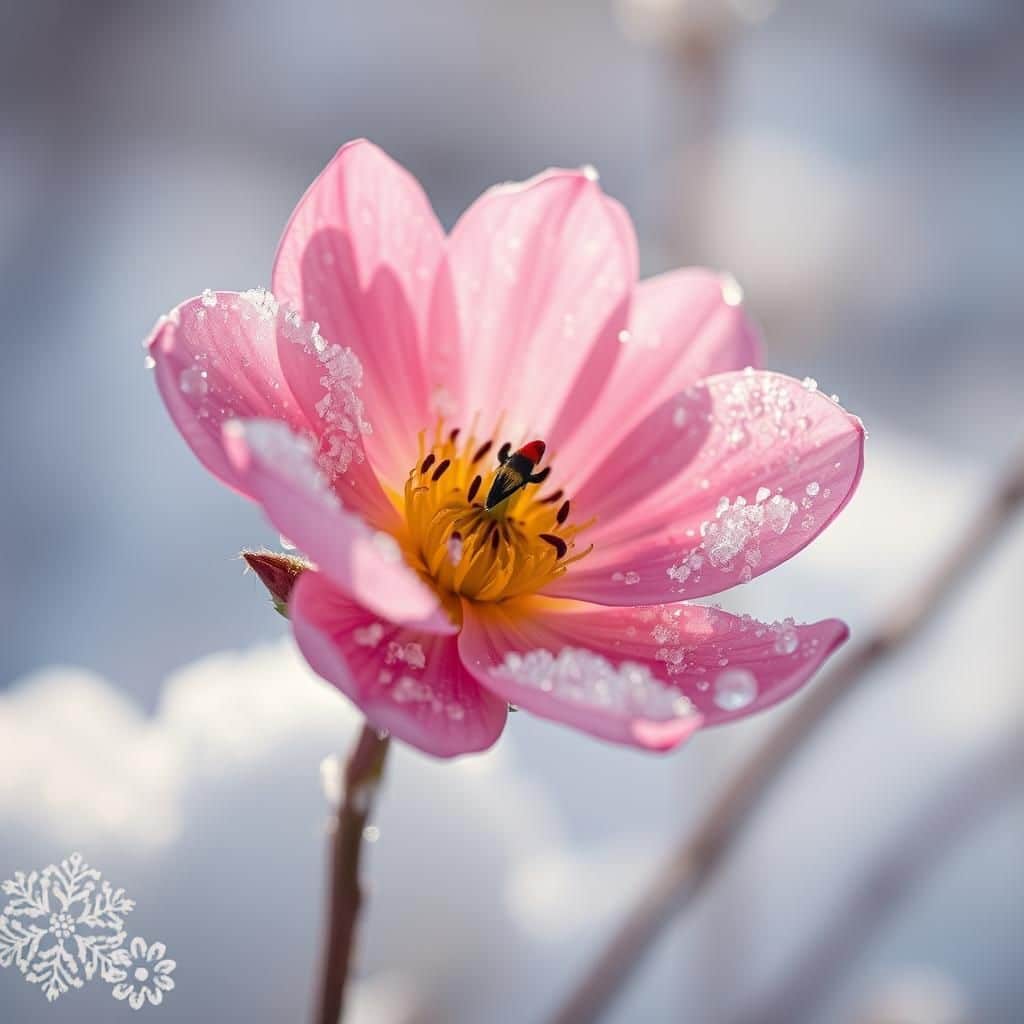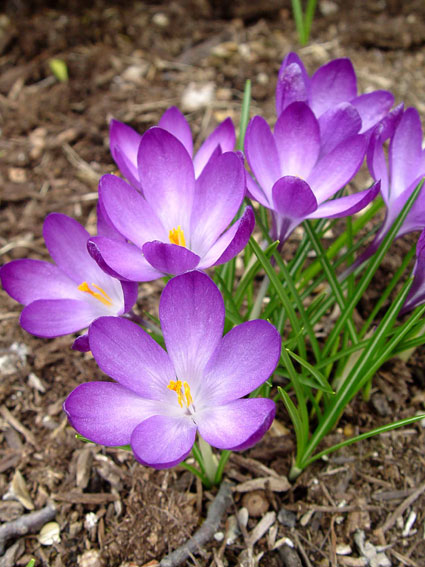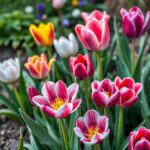Do Any Flowers Bloom in Winter? Discover the Hardiest Winter Blooms

As winter blankets the landscape in a serene layer of frost, many might assume that gardens fall into a deep slumber, devoid of color and life. However, certain resilient flowers defy this notion, bringing vibrant blooms to the chilly season. In this article, we will explore the hardiest winter flowers that not only survive the cold but also thrive in it. From the elegant snowdrops to the cheerful winter jasmine, discover how these remarkable blooms add beauty and cheer during the darkest months of the year. Join us as we uncover the secrets behind their winter resilience and showcase their enchanting allure.
Do Any Flowers Bloom in Winter?
Yes, certain flowers can bloom in winter, defying the cold and bringing color to barren landscapes. Some plants are adapted to thrive in cooler temperatures, and they often bloom during the winter months when other plants are dormant. These resilient flowers, like the snowdrop, winter aconite, and hellebores, can offer a welcome burst of color during a typically dreary season. Their blooms not only provide aesthetic pleasure but also serve as an important food source for early pollinators, such as bees, that emerge during warmer winter days.
Common Winter-Blooming Flowers
Several flowers are known to bloom in winter, including snowdrops, crocuses, and pansies. These flowers are well-adapted to withstand low temperatures and can often be found peeking through the snow. The snowdrop, for instance, is one of the first flowers to appear, often signaling that spring is around the corner. Similarly, pansies thrive in cooler temperatures, maintaining their vibrant colors even when snow is present.
Hardiness Zones for Winter Blooms
Different flowers have varying levels of cold tolerance, which is often determined by their hardiness zone. For example, snowdrops and winter aconites can thrive in USDA hardiness zones 3 to 7, making them suitable for colder climates. Understanding your own garden's hardiness zone can help in selecting the right winter-blooming flowers that will survive the frigid conditions of winter.
Winter Care for Flowering Plants
Caring for winter-blooming flowers requires some specific maintenance techniques. It's essential to ensure that these plants are not overwatered, as moist soil can lead to root rot, especially during colder months when evaporation is minimal. Mulching can also help to insulate the roots and maintain moisture levels, promoting healthier blooms even in frigid temperatures.
Benefits of Winter Blooms
One of the key benefits of having winter-blooming flowers in your garden is the aesthetic appeal they offer during a typically drab season. These flowers not only provide a visual treat but also support the local ecosystem by attracting early pollinators, including certain types of bees and butterflies. This early source of nectar is crucial for the survival of these creatures as they emerge from hibernation.
Planting Tips for Winter Flowers
When planting winter-blooming flowers, it’s important to choose well-draining soil and to consider the specific light conditions of your garden beds. Flowers like hellebores prefer partial shade, while others such as crocuses thrive in full sunlight. Additionally, planting bulbs in the fall before the ground freezes can ensure that they have a head start on blooming come winter.
| Flower | Bloom Time | Hardiness Zone |
|---|---|---|
| Snowdrop | January to March | 3 to 7 |
| Crocus | February to April | 3 to 8 |
| Winter Aconite | January to February | 3 to 7 |
| Hellebore | December to March | 4 to 9 |
| Pansy | Fall to Spring | 6 to 11 |
What flowers bloom even in winter?

Many flowers manage to bloom even in the harsh conditions of winter, bringing beauty and vibrant colors to the frostbitten landscape. Here are some of the most notable flowers that can thrive and flourish during the colder months:
1. Winter Jasmine
Winter Jasmine (Jasminum nudiflorum) is one of the first flowers to bloom in late winter. Here are some key points about this beautiful plant:
- It produces bright yellow flowers that can appear as early as January.
- This hardy shrub can tolerate cold temperatures and poor soil conditions.
- Its trailing stems make it an excellent choice for ground cover or cascading over walls.
2. Hellebores
Commonly known as Christmas Rose or Lenten Rose, Hellebores are resilient perennials that bloom from late winter to early spring. Here are some characteristics:
- They come in various colors, including white, pink, purple, and green.
- Hellebores thrive in shaded areas, making them ideal for winter gardens.
- They are known for being low-maintenance and long-lasting once established.
3. Snowdrops
Snowdrops (Galanthus nivalis) are delicate flowers that often emerge through the snow, signaling the beginning of spring. Key attributes include:
- They feature small, white, bell-shaped flowers that often bloom as early as January.
- Snowdrops are hardy bulbs that multiply over time, creating a lovely natural display.
- These flowers prefer well-drained soil and partial shade, making them versatile for gardens.
4. Crocuses
Crocuses are one of the earliest blooming flowers, often peeking through the last remnants of snow. Important details are:
See also:
- They come in a variety of colors, including purple, yellow, and white.
- These bulbs can bloom as soon as the weather starts to warm up, typically in February or March.
- Crocuses thrive in well-drained soil and full sun, making them great for sunny spots in gardens.
5. Pansies
Pansies are known for their vibrant colors and unique faces and can survive winter in many regions. Here are some points to consider:
- They bloom continuously in mild winter climates and can withstand light frost.
- Pansies are available in a range of colors and patterns, making them a favorite for winter landscaping.
- They prefer rich, well-drained soil and can flourish in both sun and partial shade.
Is there a flower that blooms in all seasons?

While there is no flower that truly blooms in all seasons simultaneously, some flowers exhibit the ability to bloom across multiple seasons given the right conditions. One such example is the pansy, which is hardy and can produce blooms throughout spring, fall, and even winter in mild climates. However, true year-round blooming can be challenging due to varying weather conditions, such as temperature and sunlight availability.
The Resilience of Pansies
The pansy is known for its vibrant colors and delicate petals, and it thrives in various climates. This flower can bloom in spring and fall, particularly in warmer regions, and in some areas, it can even withstand light frosts.
- They can tolerate a range of temperatures.
- Multitudinous colors and patterns available.
- Ideal for container gardening and garden beds.
Other Flowers with Extended Blooming Periods
Apart from pansies, several other flowers can have extended blooming periods under the right environmental conditions. Some varieties may not bloom continuously throughout the year but can bloom during multiple seasons.
- Chrysanthemums: Often bloom in the late summer and can last until winter.
- Camellias: Flower during winter and early spring in temperate regions.
- Hellebores: Often called Lenten roses, they bloom from late winter into spring.
Climate Influence on Blooming
The ability of a flower to bloom in multiple seasons often depends significantly on the local climate. In milder climates, some perennial plants can retain a flowering habit for several months.
- Regions with mild winters can allow for flowers like pansies and violas.
- Extreme heat or cold can inhibit blooming.
- Location and garden microclimates can affect blooming duration.
Importance of Care and Maintenance
To maximize the blooming potential of seasonal flowers, proper care and maintenance are essential. This ensures that plants remain healthy and can withstand varying seasonal conditions.
- Regular watering, especially during dry spells.
- Fertilizing to provide essential nutrients.
- Deadheading spent flowers to promote new blooms.
Seasonal Flowering Strategies
Gardening enthusiasts often employ strategies to ensure continuous blooms throughout the year by selecting a combination of annuals, biennials, and perennials, and staggering planting times.
- Choosing plants with varying bloom times.
- Understanding each species’ native blooming season.
- Implementing companion planting techniques for enhanced growth.
What is the first flower to bloom in the winter?

The first flower to bloom in the winter is typically the snowdrop (Galanthus nivalis). This hardy plant is known for its ability to thrive in harsh conditions, often emerging from the ground even when snow is still present. The snowdrop is characterized by its delicate white flowers that hang like little droplets, and they are one of the first signs that spring is on its way.
Characteristics of Snowdrops
Snowdrops are small, perennial plants that have specific characteristics that allow them to bloom in cold temperatures.
- Shape: The flowers are bell-shaped, with three outer petals that are often white and three inner petals that may have a green mark.
- Height: These flowers typically grow between 4 to 8 inches tall, making them relatively small compared to other spring flowers.
- Leaves: The leaves are narrow and grass-like, emerging alongside the flowers and providing a lush green backdrop for the white blooms.
Growing Conditions for Snowdrops
Snowdrops prefer specific growing conditions that allow them to thrive in winter, making them unique among flowering plants.
- Soil: They thrive in well-drained soil, often found in woodlands or gardens with rich, organic matter.
- Light: While they can bloom in full sun, they usually prefer partial shade, especially in warmer climates.
- Moisture: Moderate moisture during the growing season is essential, but they should not be waterlogged, as this can lead to bulb rot.
Ecological Importance of Snowdrops
Snowdrops hold ecological significance as they provide early food sources for various pollinators.
See also:
- Pollinators: They attract early bees and other insects that are active during the winter months, aiding in pollination.
- Habitat: Snowdrop colonies can create habitats for various wildlife, including small mammals that rely on winter greenery.
- Indicators of Spring: The early blooming of snowdrops signals the impending arrival of spring, influencing other plants and wildlife behaviors.
Snowdrop Cultivation
Cultivating snowdrops can be a rewarding experience for gardeners interested in winter blooms.
- Planting: Snowdrops are usually planted as bulbs in the fall, about 3 to 4 inches deep and spaced 3 to 4 inches apart.
- Care: Minimal care is needed after planting; keeping the area free from weeds and providing occasional water during dry spells is usually sufficient.
- Propagation: Snowdrops can be propagated by division because they tend to create clusters that can be separated and replanted.
Symbolism of Snowdrops
Snowdrops are often associated with various meanings and are symbolic in different cultures.
- Hope: They symbolize hope and new beginnings, representing resilience against harsh conditions.
- Purity: The white petals of the snowdrop are often linked to concepts of purity and innocence.
- Seasonal Change: As one of the first flowers to bloom, they are a reminder of the transition from winter to spring, symbolizing renewal and growth.
Which one of the following flowers blooms in winter?

The flower that blooms in winter is the Winter Jasmine (Jasminum nudiflorum). This particular plant is known for its bright yellow, fragrant flowers that typically appear in late winter, often defying the cold weather and providing a splash of color when most other plants are dormant. Here are some details about Winter Jasmine and other aspects related to winter-blooming flowers.
Characteristics of Winter Jasmine
Winter Jasmine is a deciduous shrub that can grow up to 3 feet tall. It is popular for its vibrant yellow blooms that emerge even before the plant has leafed out. The flowers are not only visually appealing but also emit a sweet fragrance, attracting various pollinators.
- Color: Bright yellow
- Fragrance: Sweet scent that attracts pollinators
- Growth Habit: Can be trained to grow on walls or trellises
Other Flowers That Bloom in Winter
While Winter Jasmine is a well-known winter bloomer, several other plants also flower during the cold months. These include plants like Snowdrops, Hellebores, and Witch Hazel, each with unique attributes.
- Snowdrops: Delicate white flowers that bloom in late winter, often through snow.
- Hellebores: Known as Lenten roses, these sturdy flowers can bloom in late winter to early spring.
- Witch Hazel: Produces curious, spidery yellow flowers that can bloom in January or February.
Benefits of Winter-Blooming Flowers
Winter-blooming flowers have several benefits, including providing aesthetic value and supporting local wildlife during harsh winters. They can enhance garden appeal in off-seasons and provide essential resources for pollinators when few other flowers are available.
- Aesthetic Appeal: Offers color and beauty to winter landscapes.
- Wildlife Support: Attracts bees and other pollinators during their active months.
- Season Extension: Allows gardeners to enjoy blooms outside the traditional growing season.
How to Care for Winter Flowers
Caring for winter-blooming flowers varies by species but mostly involves ensuring proper planting conditions and protection from harsh weather. Knowing specific requirements for each plant type can prevent damage and promote healthy growth.
- Soil Quality: Ensure well-draining soil to promote root health.
- Watering: Water critically during dry spells, especially before blooming.
- Protection: Use mulch or protective covers during extreme weather conditions.
Cultural Significance of Winter Flowers
In various cultures, winter-blooming flowers symbolize perseverance and hope. They are often associated with activities and events that encourage the celebration of life, even in the coldest months.
- Symbolism: Represents resilience and the promise of spring.
- Celebratory Events: Used in winter festivals to bring cheer.
- Gardening Traditions: Encourages winter gardening activities and planning for spring.
Questions from Our Readers
Do any flowers bloom in winter?
Yes, some flowers indeed bloom in winter. Winter-blooming plants like hellebores, pansies, and snowdrops can bring color to a bleak landscape, providing a cheerful sight even in the coldest months.
What are some examples of winter flowers?
Some popular winter flowers include witch hazel, winter jasmine, and camellias. These plants not only survive but thrive in low temperatures, adding beauty to gardens and landscapes during the winter season.
How can I grow winter-blooming flowers?
To grow winter-blooming flowers, choose cold-hardy varieties suited for your climate. Plant them in well-draining soil and ensure they receive adequate sunlight; this can help ensure they bloom successfully despite the chilly weather.
Do winter flowers need special care?
Yes, winter flowers often require specialized care such as mulching to protect their roots from freezing temperatures. Additionally, it's crucial to monitor for proper drainage to prevent the roots from rotting due to excess water during the winter months.
See also:

If you want to read more articles like Do Any Flowers Bloom in Winter? Discover the Hardiest Winter Blooms, we recommend you check out our Landscaping category.
Leave a Reply
Related Articles